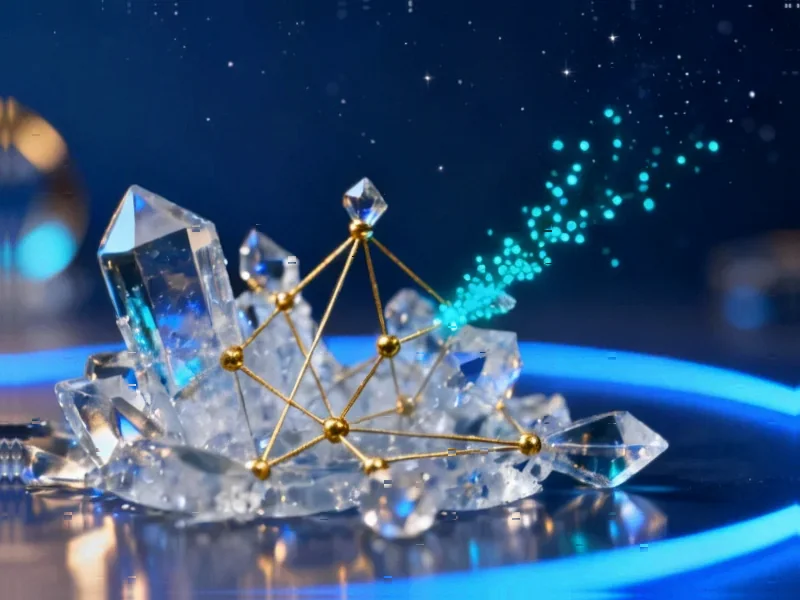According to Phys.org, a research team led by Yang Bai at the University of Wisconsin has proposed repurposing existing neutrino detectors as massive particle colliders that could reach energies up to 220 peta-electron volts. This represents nearly 16,000 times more energy than the Large Hadron Collider can currently produce, potentially enabling physicists to test theories beyond the standard model of particle physics. The concept, called Large Neutrino Collider (LvC), would utilize existing facilities like IceCube in Antarctica, KM3NeT in the Mediterranean, Baikal-GV in Lake Baikal, and the newly operational JUNO detector in Jiangmen, China. The researchers focus specifically on “track” events where neutrinos interact with muons, creating detectable light patterns, as detailed in their paper published on arXiv. This innovative approach could overcome the physical and economic limitations of building ever-larger traditional colliders.
The Physics Behind the Proposal
The fundamental insight here is that neutrino detectors are essentially already functioning as particle colliders, just not ones we’ve been actively controlling. When ultra-high energy neutrinos interact with matter in these massive detectors, they create particle showers that generate Cherenkov radiation. What makes this proposal particularly clever is recognizing that we’re already building the infrastructure – these detectors contain enormous volumes of material where high-energy collisions naturally occur. The key difference from traditional colliders is that instead of accelerating particles ourselves, we’re leveraging cosmic neutrinos that nature has already accelerated to incredible energies through astrophysical processes we don’t fully understand.
Significant Technical Hurdles
While the energy scales are impressive, there are substantial challenges that the paper acknowledges but may understate. The biggest limitation is that we have no control over the collision parameters – we’re passive observers of cosmic events rather than active experimenters. This means we can’t tune collision energies, adjust particle types, or repeat experiments under controlled conditions. The signal-to-noise ratio is also problematic – we’re looking for extremely rare events amid a sea of background interactions. Most concerning is that for many types of particle searches, including heavy vector bosons, the researchers calculate that LvC wouldn’t even be competitive with the LHC, which raises questions about how broadly applicable this approach really is.
Comparison to Other Frontier Techniques
This proposal fits into a broader trend in particle physics of finding creative ways to extend our reach without building increasingly expensive facilities. Similar approaches include using atmospheric cosmic rays as natural particle beams and leveraging precision measurements of rare decays to probe high energy scales indirectly. What makes the neutrino detector approach particularly interesting is that we already have operational facilities that could implement this methodology with relatively modest additional instrumentation. However, the history of particle physics is littered with clever ideas that ultimately proved impractical when scaled up – from plasma wakefield acceleration to muon colliders – so cautious optimism is warranted.
Practical Implementation Challenges
The transition from theoretical proposal to practical experiment faces several non-trivial obstacles. Existing detectors were optimized for neutrino detection, not high-energy collision physics, meaning their geometry, instrumentation, and data acquisition systems may need significant modification. The analysis of “track” events versus “shower” events introduces selection biases that could mask important physics. There’s also the fundamental issue of statistics – even with massive detectors, the rate of useful ultra-high energy neutrino interactions is extremely low, meaning we might need to wait decades to collect enough data for meaningful conclusions about beyond-standard-model physics.
Broader Implications for Particle Physics
If this approach proves viable, it could represent a paradigm shift in how we think about particle physics infrastructure. Rather than building dedicated colliders at ever-increasing cost, we might develop multi-purpose facilities that serve multiple scientific communities. The next generation of neutrino detectors, already in planning stages, could be designed from the ground up to also function as particle colliders. This could dramatically reduce the cost per discovery in high-energy physics. However, the specialized nature of particle detection equipment means there will always be trade-offs, and we may find that purpose-built facilities remain necessary for certain types of precision measurements.
Realistic Outlook and Timeline
The most promising aspect of this proposal is that initial tests could be conducted relatively quickly using existing data from operating detectors. Researchers could re-analyze archival data looking for signatures of beyond-standard-model particles, providing quick validation of the concept. For more comprehensive implementation, we’re likely looking at the 2030s timeframe when next-generation detectors like the proposed IceCube-Gen2 come online. The real test will be whether this approach can deliver discoveries that traditional colliders cannot, or whether it remains an interesting but ultimately supplementary technique in the particle physicist’s toolkit.




